Out of all of the cities and airports in the world, I’ve had the most layovers in Istanbul. With Turkish Airlines offering an extended stopover program, there’s no reason to not try to see the city. Though 24 hours is not nearly enough for not only Istanbul, but the vast, beautiful country that is Türkiye (formerly known as Turkey), I was grateful to finally step foot on Turkish land after so many layovers stuck in the airport, and get my feet wet exploring the vivid vibrant city of Istanbul.
What To Eat
Turkish cuisine really is out of this world. I had heard this from many other visitors, but experiencing Turkish food in Turkey not only confirmed it, but blew my expectations out of the water. Here’s a list of everything I ate in my 24 hours in Turkey:
This guided food and culture tour is a great way to try the best of the best and to learn about the history behind the bites.
Pide
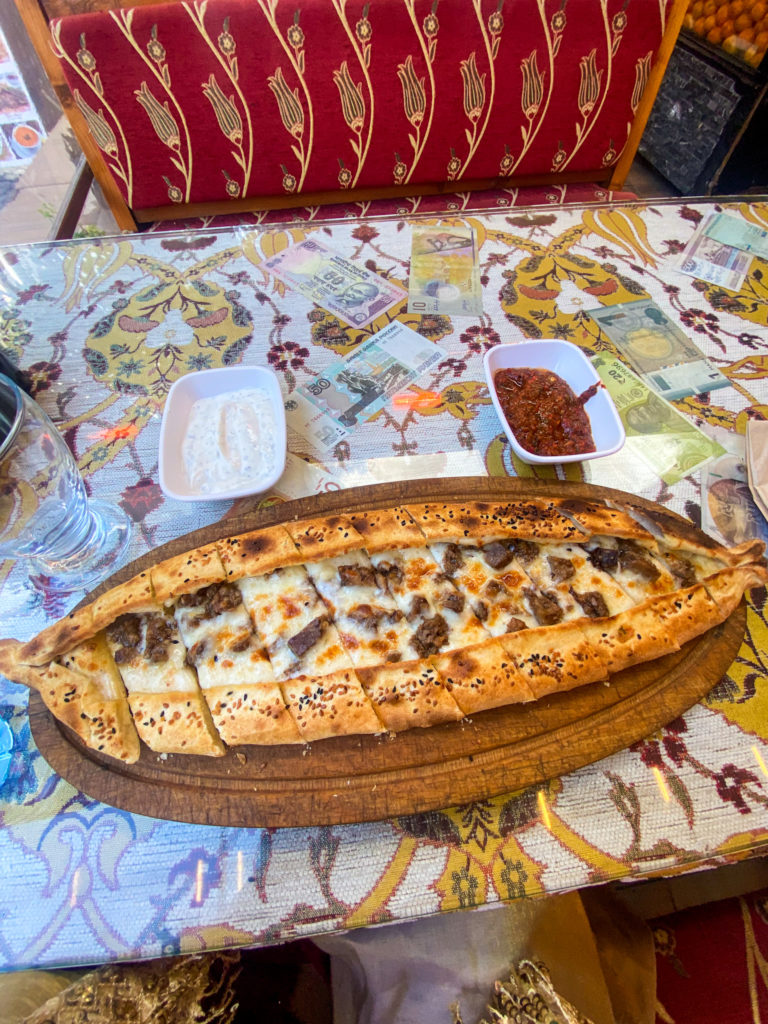
Pide is an oval-shaped flatbread, typically with cheese and a large selection of other toppings. It is typically broiled, creating a crispy exterior crust and a soft gooey center. Pide was the first thing I got when I landed in Istanbul, and it might just be the best thing I had.
Knafeh
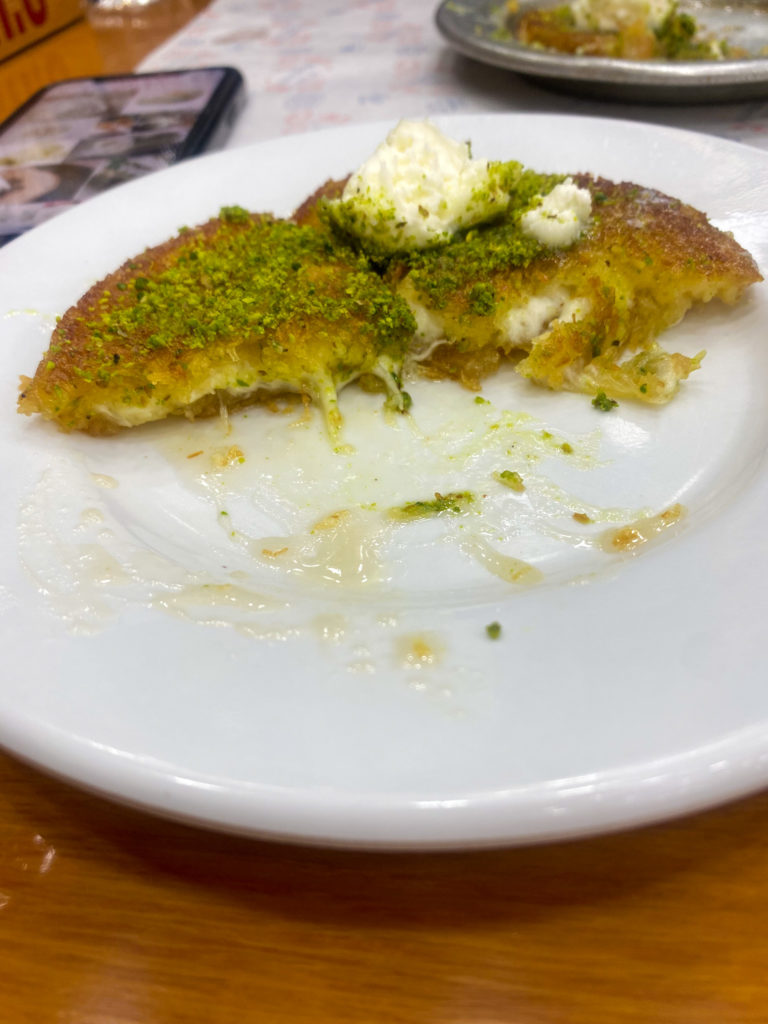
For something truly mind-blowing, you must try knafeh. I had seen this concoction in many Middle Eastern cooking videos and my curiosity told me if I was ever to see it on a menu, I’d have to order it. Well, low and behold, at a late night eatery with a local Turkish dude I befriended, knafeh was ordered. Out came a bubbling platter of layered sweet cheese, pistachios, and shredded filo dough, all topped with a rose-water flavored simple syrup. The scorching hot plate created a caramelization around the knafeh, adding extra layers of flavor and crunch. This dessert is savory meets sweet, crunchy meets gooey. You’ve got to taste it to become a believer.
Arnavut Cigeri
My experience trying arnavut cigeri was not necessarily by choice, but instead through the order of a Turkish man I made friends with at his father’s tea shop. Arnavut cigeri is essentially Turkish liver and onions. I’m not the biggest fan of liver, but I’ll try anything 100x, so I grabbed some pita bread, and used it as a vessel to pick up the liver to somewhat mask the flavor. The guy I was with who’s a local to Istanbul said it’s his favorite Turkish dish, so hey, if you want to eat like the locals, order some arnavut cigeri.
Dondurma
Have you seen those videos of those guys playing tricks on tourists, pretending they’re about to give them a giant stack of scooped ice cream, only to take it back and start messing with them? Dondurma, or Turkish Ice Cream, is not only a delicious treat, but it’s an experience on the streets of Istanbul. Turkish ice cream is different from regular ice cream because it’s much thicker and is essentially resistant to melting. It includes the thickening agent salep, a flour made from the root of the early purple orchid, which helps in both its chewy texture and inability to melt.
Turkish delight
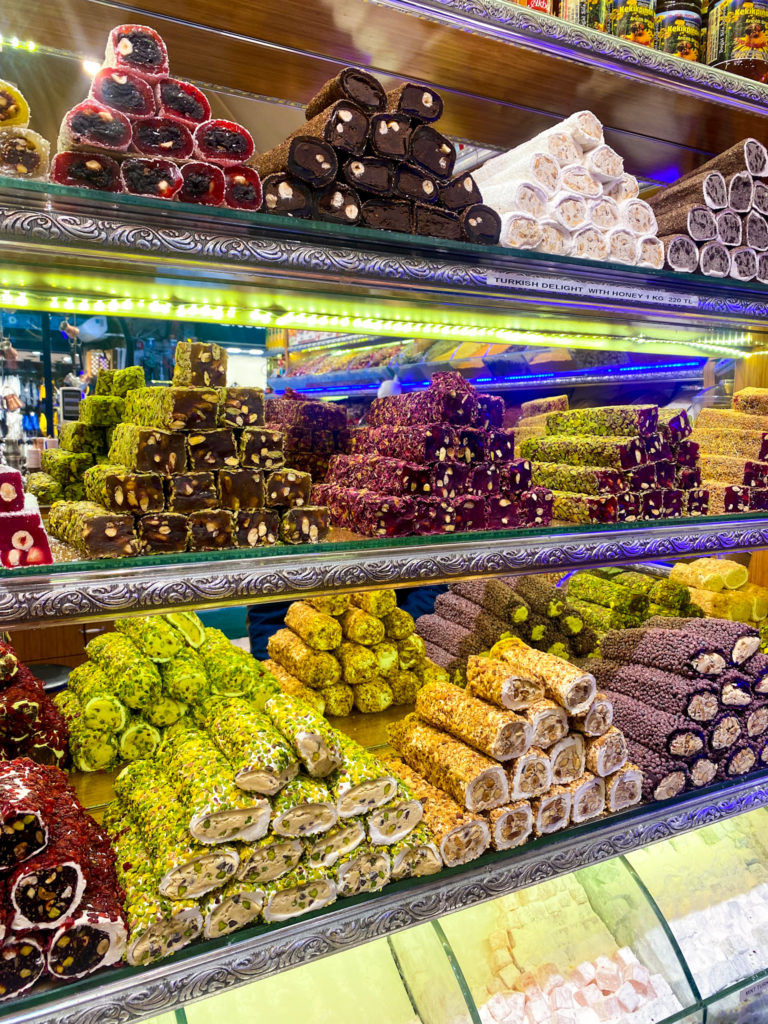
Turkish delight might not be on your Turkish cuisine radar, but you’ll see so much of it that you likely won’t stop thinking about trying it, so you might as well just go for it. Turkish Delight is a starchy, sugary treat, rolled in a variety of toppings from dried rose, dried lavender, pistachios, to name a few. It is often flavored with rosewater, orange, lemon, or other citrus. Sometimes it even includes chocolate and figs. The flavors are endless, and most shops in the city center will package these delights safely so you can travel back home with them.
(An obscene amount of) Turkish coffee
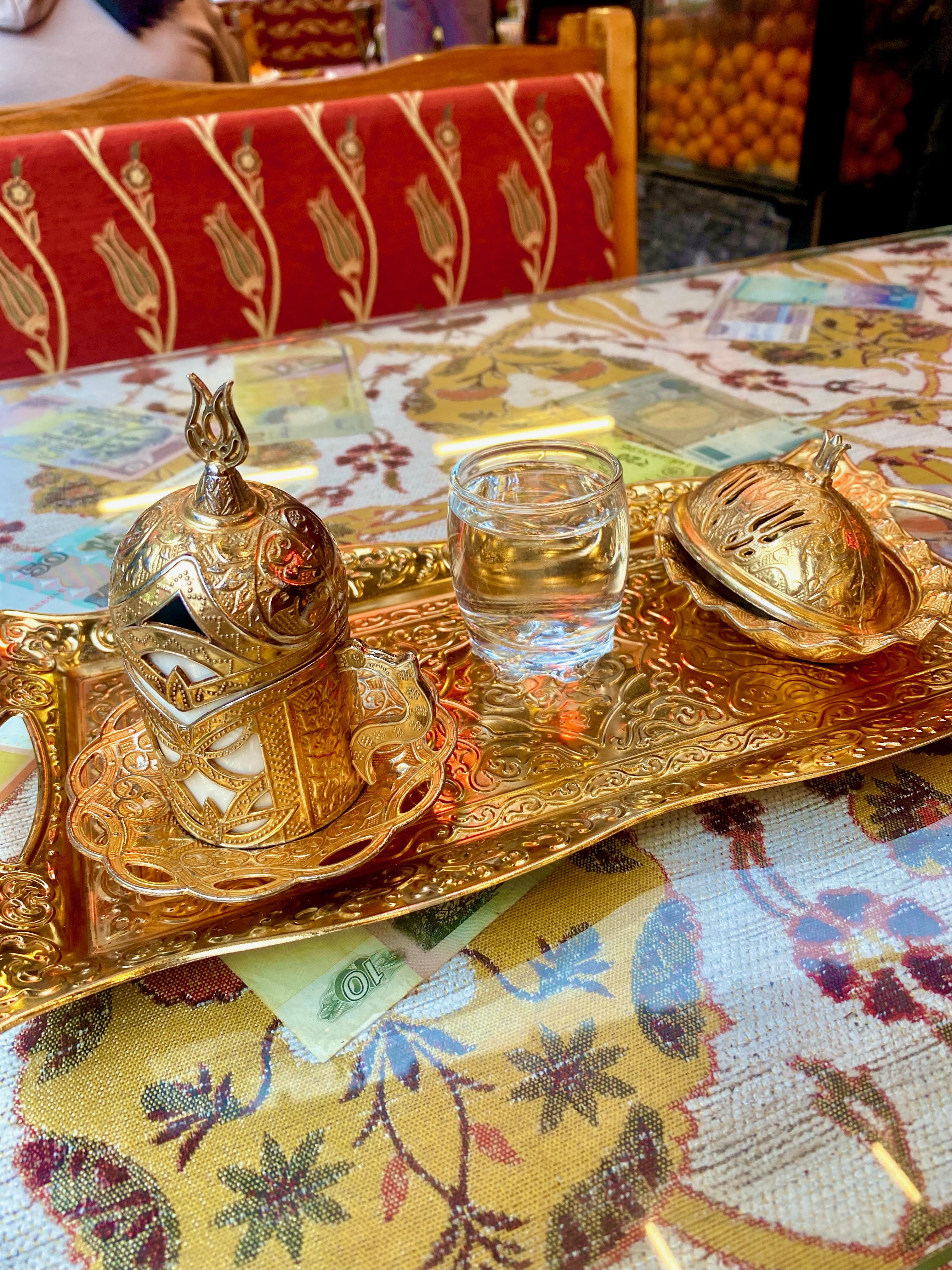
There’s strong coffee, and then there’s Turkish coffee. Turkish coffee is finely ground, unfiltered coffee cooked in a cezve. A cerze is a brass/copper pot with a pouring lip designed specifically to brew the intensity that is Turkish coffee. Note that Turkish coffee has a dirt-like texture found at the bottom of the cup since it is unfiltered. Don’t let it deter you. You think Italian espresso is strong? Go for the gold with Turkish coffee, and don’t knock it ’til you try it!
Döner
Last but certainly not least on what I ate in Istanbul is perhaps its most notable dish, the döner, or döner kebab. The real MVP of Turkish food is the most accessible, on-the-go, filling yet still affordable dish served in Istanbul. Slices of heavily seasoned meat, typically lamb, but it can be any type of meat, are shaved off of a rotating skewer of stacked slabs of meat under low, slow heat. So, why is it so good? Doner kebab is fatty AF, and we all know fat = flavor. You basically didn’t even go to Istanbul unless you ate döner.
This is just what I ate in Istanbul, but there are so many other options of what to eat. Most surprisingly, Istanbul has great seafood options, as it is indeed a coastal city. I am here to confirm that no matter what you eat in Istanbul, you’re going to be extremely impressed. Getting a bad meal here is pretty much impossible, and it remains a confusing conundrum as to why Istanbul’s food is not globally praised.
Where To Stay
For only one night in this bustling, large metropolis, it can feel like a lot of pressure in deciding where to stay. Should you stay on the Asian or European side? In a young, hip neighborhood, or a classic, more traditional one? Here’s a breakdown of a few of the many neighborhoods in Istanbul:
Sultanahmet
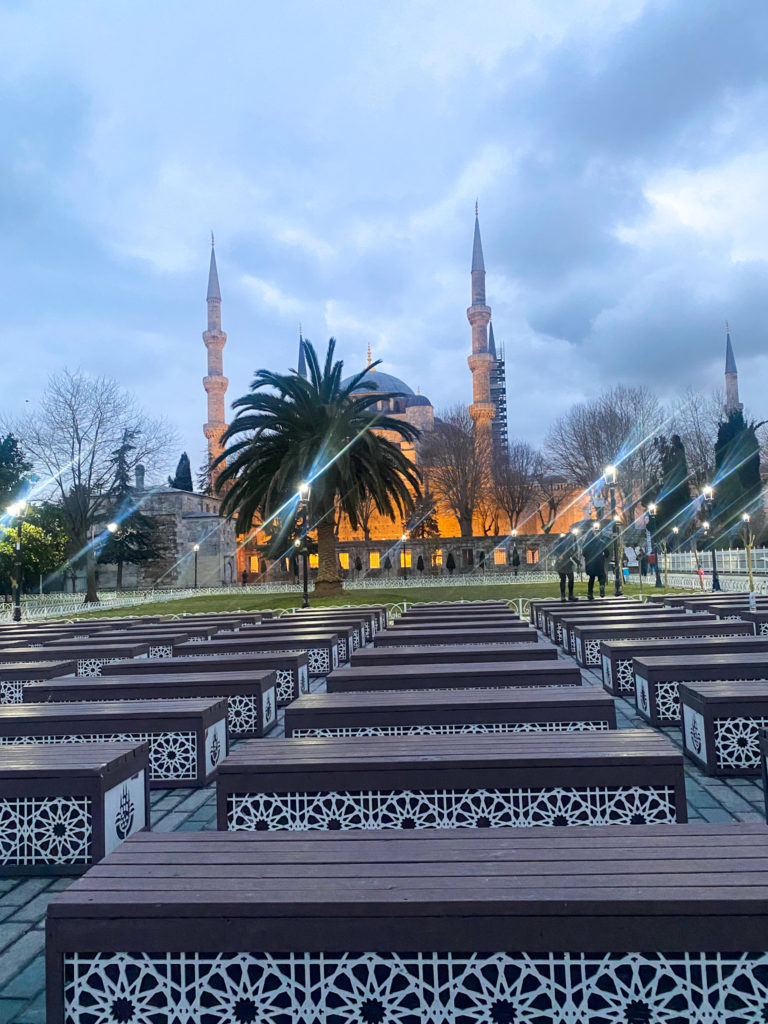
For those who only have 24 hours and want to see as many major sites as possible, by far, your best bet is Sultanahmet. This is where I stayed for this very reason. It’s a stone’s throw from sites such as The Blue Mosque, Hagia Sofia, Topkapi Palace, and more. Perks? There’s something for every budget. Downfalls? Getting a crappy touristic meal here is sort of inevitable. Those photos of pide and kebab are to be avoided; hidden gems CAN be found in the area, but your best bet is to do your research in the Times Square of Istanbul.
Balat
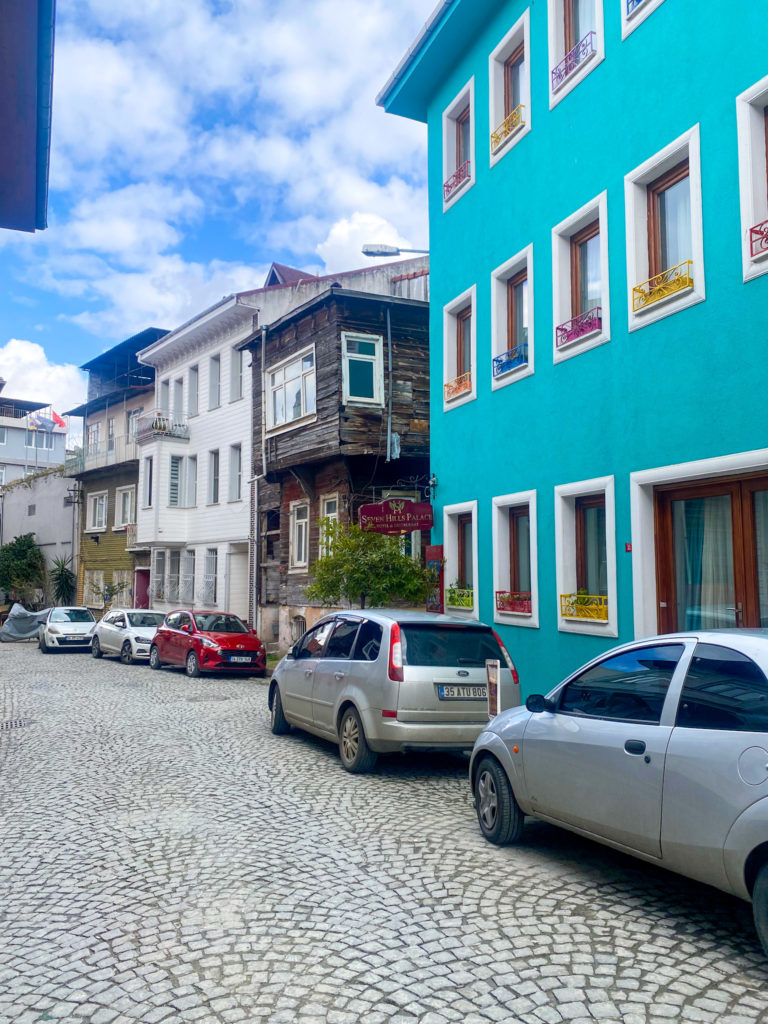
Instagram or it didn’t happen, am I right or am I right? Located on the European side of the city in the Fatih neighborhood, Balat is filled with colorful houses that are perfect for strolling and snapping photos. There are also several mosques, eateries, cafes, and bars in the area for your enjoyment.
Kadikoy
If you’re into nightlife, this is the neighborhood for you. Kadikoy is located on the Asian side of Istanbul, and has blown up in recent years with nightlife, hip coffee shops, and art installations. There’s even a museum in Kadikoy dedicated to Baris Manco, a famous Turkish musician.
Bomonti
Otherwise known as the “neighborhood that never sleeps,” Bomonti is a bustling urban neighborhood in Istanbul that, if you don’t decide to stay in, you should at least make the effort to visit.
What To See
Istanbul is home to so many amazing sites, and with only 24 hours, you’ll sadly have to pick and choose. This is why I need to come back. For example, I was never able to see The Grand Bazaar, one of the most famous sights here, because the timing just did not work out. All the more reason to go back, I say! Here are some top sights to see in Istanbul:
Continent-hop from Europe to Asia on the Bosphorous Bridge
One of the coolest things about Istanbul is that it’s split between two continents, one of the only cities in the world to possess this unique feature. Cross the Bosphorous Bridge on the Bosphorous Strait, or even take a cruise down to officially jump from Europe to Asia and vice-versa.
The best way to do this is by booking a tour.
Visit The Blue Mosque
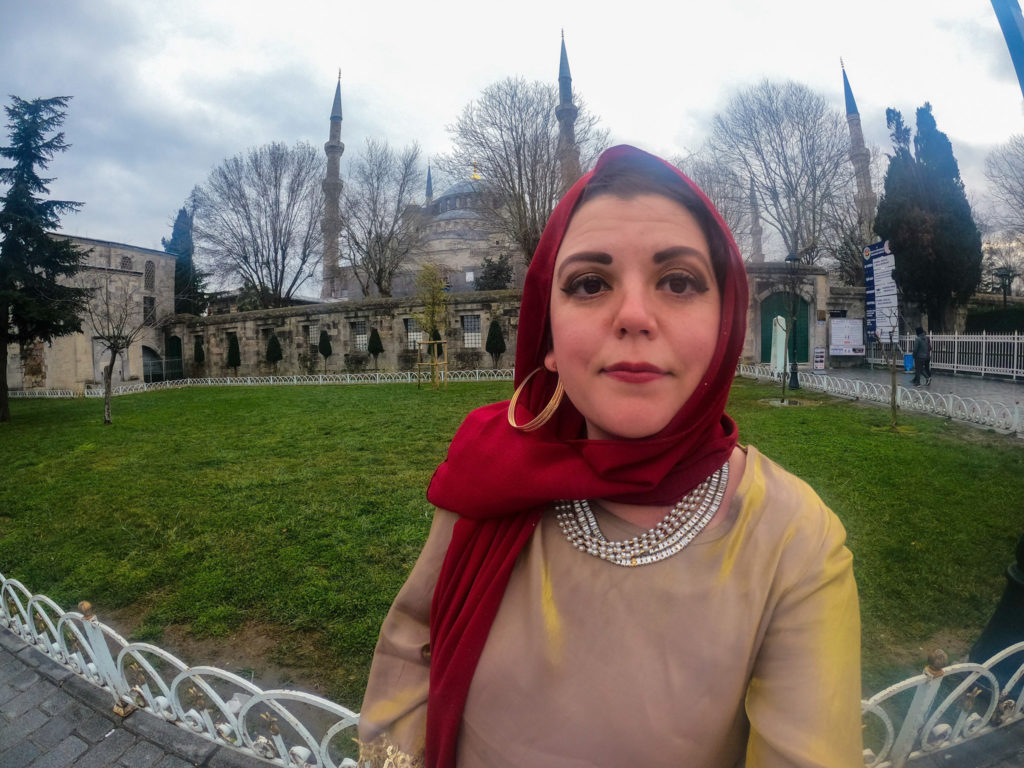
By far one of the most famous sights to behold in this city is The Blue Mosque, a large mosque that’s available for viewing to the public. Just make sure to dress in conservative clothing, as in hair, shoulders, and knees covered.
Visit Hagia Sofia
Right across the street from The Blue Mosque is yet another famous Istanbul spot, the Hagia Sofia. Originally built as a Christian church, the Hagia Sofia is now a mosque. The dome atop Hagia Sophia is the second largest in the world, after the Pantheon in Rome, Italy. It’s extremely picturesque, but because it’s so big, it’s better to see it from above.
Get a ticket to both Hagia Sofia and the Blue Mosque in one go here.
Shop At The Grand Bazaar
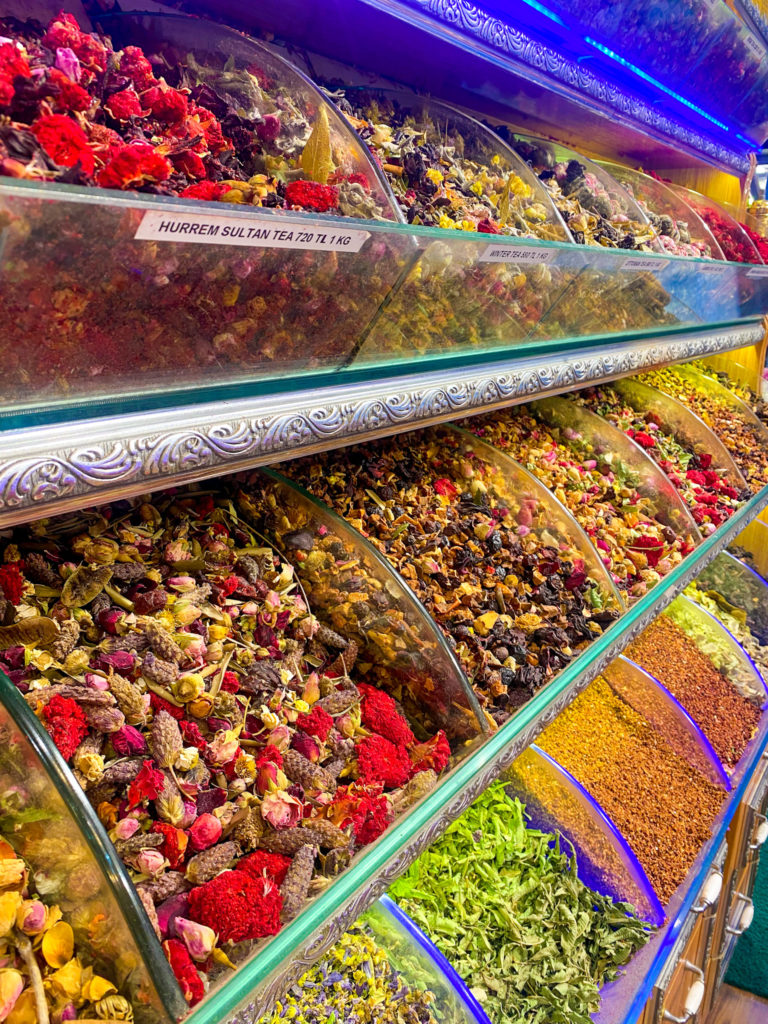
Known as one of the largest souks in the entire world, Istanbul’s Grand Bazaar should not be missed. Buy anything from jewelry to keychains to handbags to candles. Of course, grab a Turkish rug, a Turkish tea-set, or even a cerze.
What To Expect: Weather
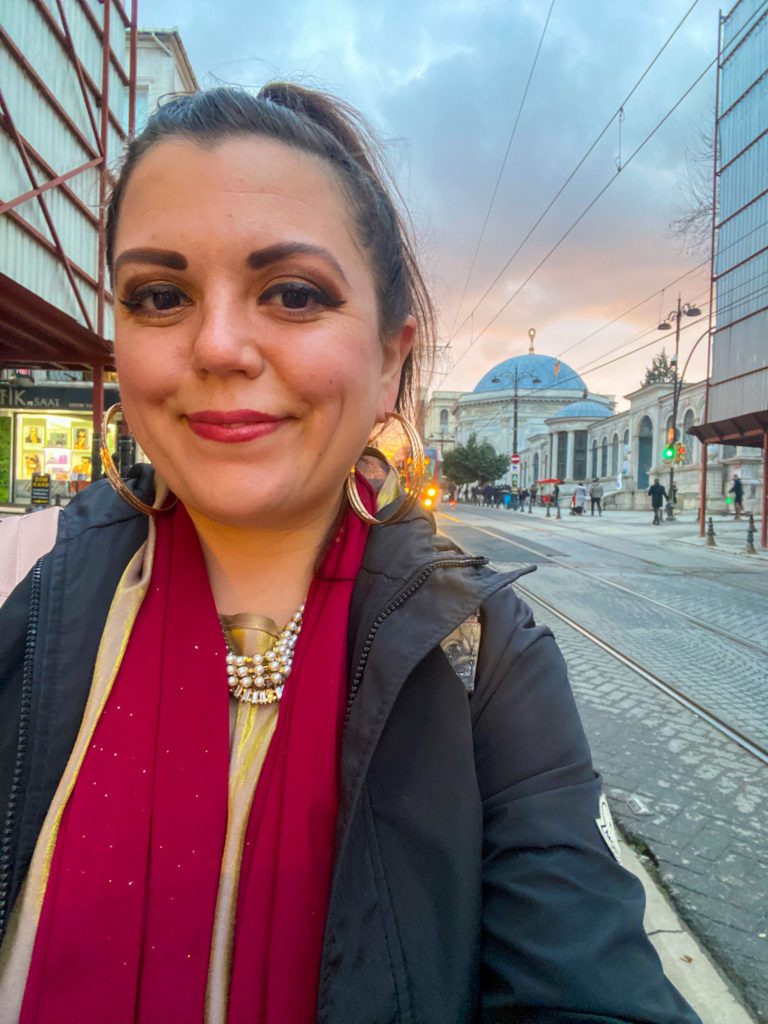
The weather in Istanbul, despite being in The Middle East, is not super hot. From April-October, it can reach above 80 degrees Fahrenheit, though is more likely to linger around the 70-degree mark. From November-March, it can get quite cold. I was there in March, and it was so cold that I needed to borrow someone’s jacket! Thank goodness for kind shop-owners.
What To Wear
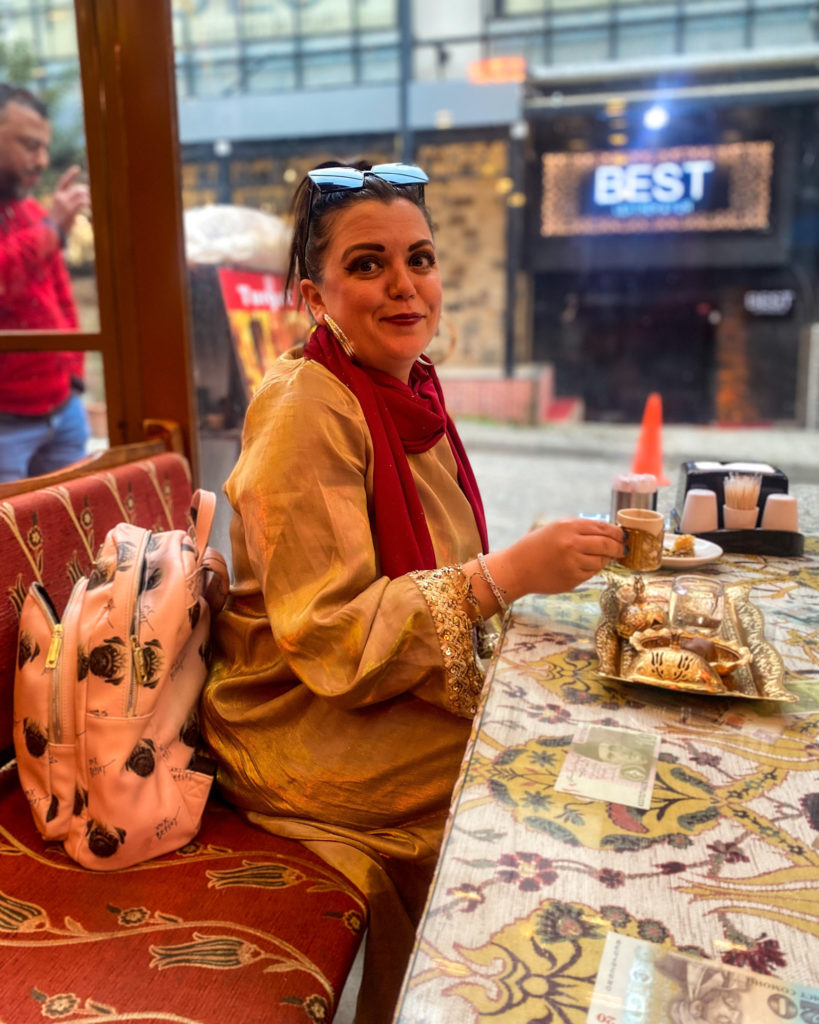
It’s always important to know what to wear when traveling, and the dress code is not as conservative as one might think considering where Turkey is geographically located. Women and men can wear shorts in the summer, and tank tops are also fine. However, when visiting more conservative parts of the country, it’s appropriate to cover shoulders and knees. To dodge unwanted attention, especially for solo female travelers, I’d highly recommend a long flowy dress and a cute scarf for a pop of color.
So… Is A Day Layover Worth it?
While I would highly recommend spending more than just one day in Istanbul, and definitely more than just one day in Turkey, if you have the opportunity to have a long layover here, GO FOR IT! Istanbul is such a fun city, and even just one short day of exploring was better than none at all.
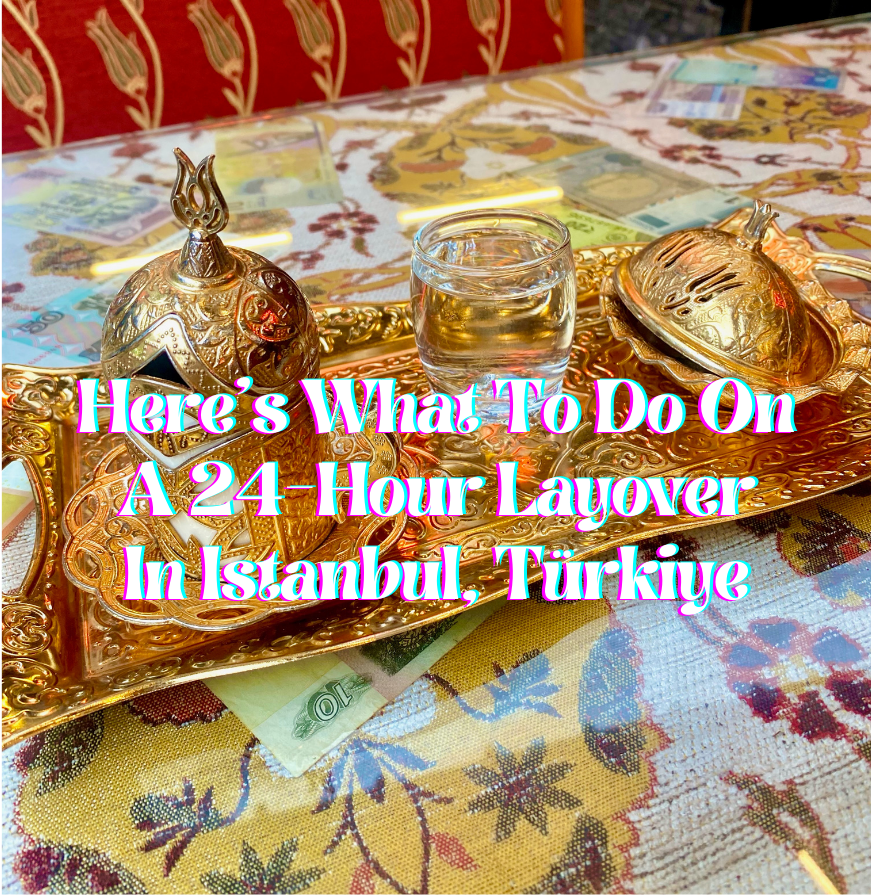
Pingback:10 Things To Do On A Long Layover in Panama - No Man Nomad
Pingback:10 Things To Do On A Long Layover in Panama - No Man Nomad